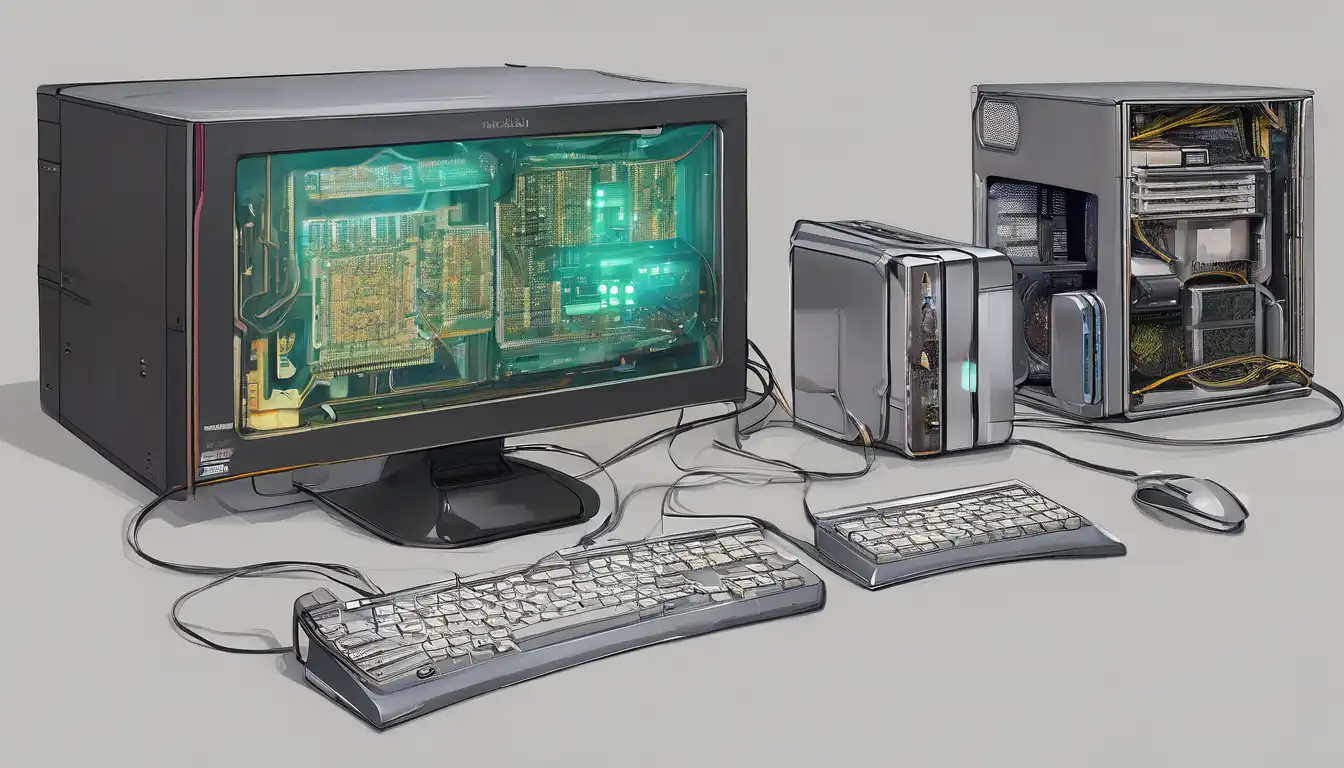Revolutionary Advances in Computer Hardware Technology
The computer hardware landscape is undergoing unprecedented transformation, with innovations emerging at an accelerated pace. From quantum computing breakthroughs to AI-optimized processors, the latest developments are reshaping how we interact with technology. These advancements promise to deliver unprecedented performance, efficiency, and capabilities that were once confined to science fiction.
Next-Generation Processor Technologies
The processor market has seen remarkable innovation with the introduction of 3D stacking technology and chiplet architectures. Companies like AMD and Intel are pushing boundaries with their latest offerings. AMD's Ryzen 7000 series processors feature advanced 5nm manufacturing processes, while Intel's 13th generation Raptor Lake processors demonstrate significant improvements in multi-core performance. These processors incorporate AI acceleration capabilities that optimize performance based on workload demands.
Quantum computing represents another frontier in processor technology. While still in early stages, companies like IBM and Google are making substantial progress in developing practical quantum processors. These systems leverage quantum bits (qubits) that can exist in multiple states simultaneously, potentially solving complex problems millions of times faster than classical computers. The integration of quantum computing with traditional architectures opens new possibilities for scientific research and data analysis.
Memory and Storage Innovations
Memory technology has evolved significantly with DDR5 RAM becoming mainstream, offering double the bandwidth of previous generations. The latest DDR5 modules provide speeds exceeding 6400 MT/s, enabling faster data transfer and improved system responsiveness. Meanwhile, storage solutions continue to advance with PCIe 5.0 SSDs delivering read speeds up to 14,000 MB/s, making traditional hard drives obsolete for performance-critical applications.
3D NAND technology has revolutionized storage density, allowing manufacturers to pack more data into smaller physical spaces. The latest SSDs feature advanced error correction and wear-leveling algorithms that extend lifespan while maintaining peak performance. For enterprise applications, computational storage drives are emerging that process data directly on the storage device, reducing CPU overhead and improving efficiency.
Graphics and Display Technology
The graphics card market has witnessed substantial innovation with NVIDIA's RTX 40 series and AMD's Radeon RX 7000 series pushing the boundaries of real-time ray tracing and AI-powered upscaling. DLSS 3.0 technology uses artificial intelligence to generate frames, dramatically improving performance in demanding games and professional applications. These advancements are complemented by display technologies supporting 8K resolution at high refresh rates.
Mini-LED and OLED displays are becoming more accessible, offering superior contrast ratios and color accuracy. The integration of variable refresh rate technology across monitors and graphics cards ensures smooth visual experiences without screen tearing. For professionals working in content creation and design, color-accurate displays with wide color gamuts are now available at consumer-friendly price points.
Cooling and Power Management
Advanced cooling solutions have become essential as component power consumption increases. Liquid cooling systems have evolved from custom loops to all-in-one solutions that are easy to install and maintain. Phase-change cooling and vapor chamber technology are being implemented in high-end graphics cards and processors to manage thermal loads more effectively. These innovations allow components to maintain higher clock speeds for extended periods without thermal throttling.
Power supply technology has kept pace with these developments, with ATX 3.0 standards introducing better power delivery for modern components. The latest power supplies feature higher efficiency ratings and improved transient response, ensuring stable operation under varying load conditions. For mobile devices, fast-charging technologies continue to evolve, with some laptops supporting full charges in under an hour.
Connectivity and Peripheral Advances
Connectivity standards have seen significant upgrades with Wi-Fi 6E and the upcoming Wi-Fi 7 offering faster speeds and reduced latency. Bluetooth 5.3 improves power efficiency and connection stability for wireless peripherals. USB4 brings Thunderbolt compatibility to mainstream devices, supporting data transfer speeds up to 40 Gbps and enabling single-cable docking solutions.
Peripheral technology has advanced with optical-mechanical keyboards offering the tactile feedback of mechanical switches with the durability of optical sensors. High-precision gaming mice now feature sensors with resolutions exceeding 25,000 DPI, while VR controllers incorporate advanced haptic feedback for more immersive experiences. These developments in computer peripherals enhance user interaction and productivity across various applications.
Emerging Technologies and Future Trends
Several emerging technologies promise to reshape the hardware landscape further. Neuromorphic computing, which mimics the human brain's neural structure, shows potential for AI applications. Photonic computing, using light instead of electricity for data transmission, could revolutionize processing speeds. Meanwhile, biodegradable electronics and sustainable manufacturing practices are gaining attention as the industry addresses environmental concerns.
The integration of AI directly into hardware components represents another significant trend. AI-accelerated chips are being developed for specific tasks like image recognition and natural language processing. These specialized processors offload AI workloads from general-purpose CPUs, improving efficiency and performance. As these technologies mature, we can expect even more dramatic improvements in computing capabilities across all device categories.
Conclusion: The Future of Hardware Innovation
The rapid pace of innovation in computer hardware shows no signs of slowing. From processors that learn and adapt to storage solutions that think, the boundaries between hardware and intelligence continue to blur. These advancements promise to unlock new possibilities in gaming, content creation, scientific research, and everyday computing. As technology continues to evolve, staying informed about the latest developments ensures users can make the most of these exciting innovations.
The convergence of multiple technological breakthroughs creates synergistic effects that accelerate progress across the entire computing ecosystem. Whether for professional applications or personal use, understanding these hardware innovations helps consumers make informed decisions and businesses plan for future technology adoption. The coming years will undoubtedly bring even more revolutionary changes to how we compute and interact with digital technology.
